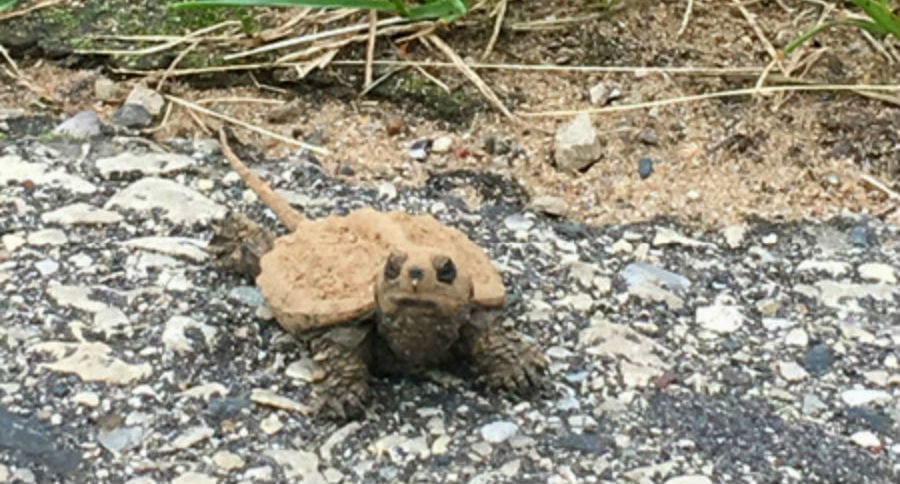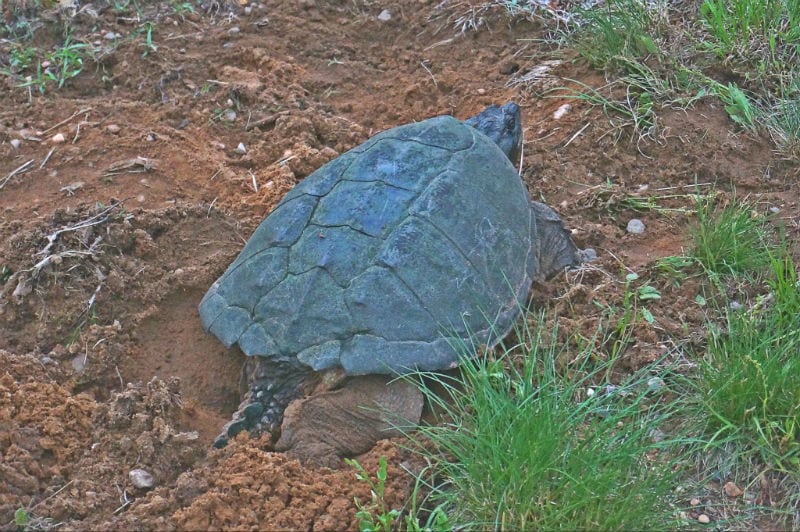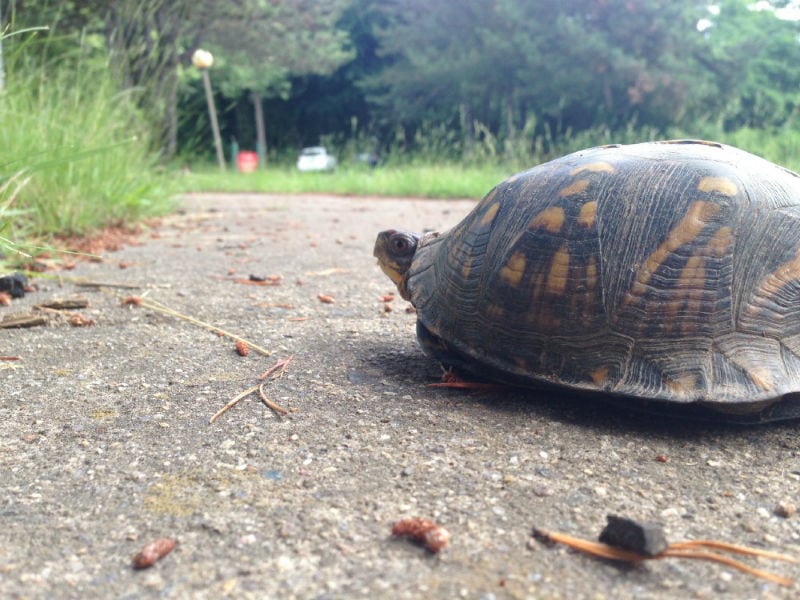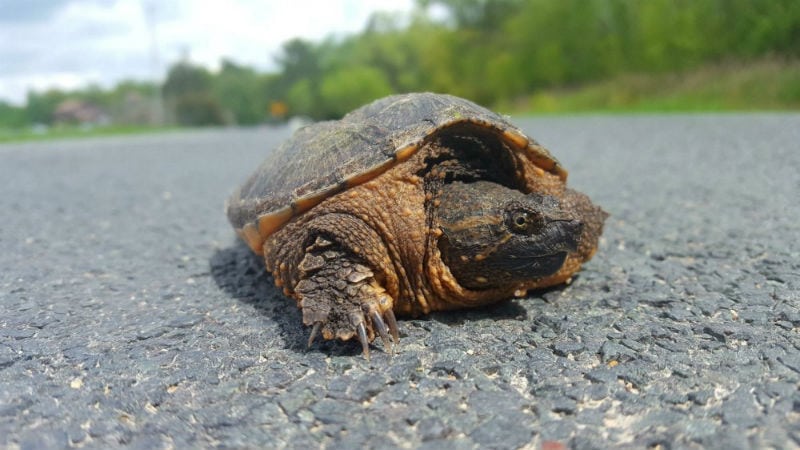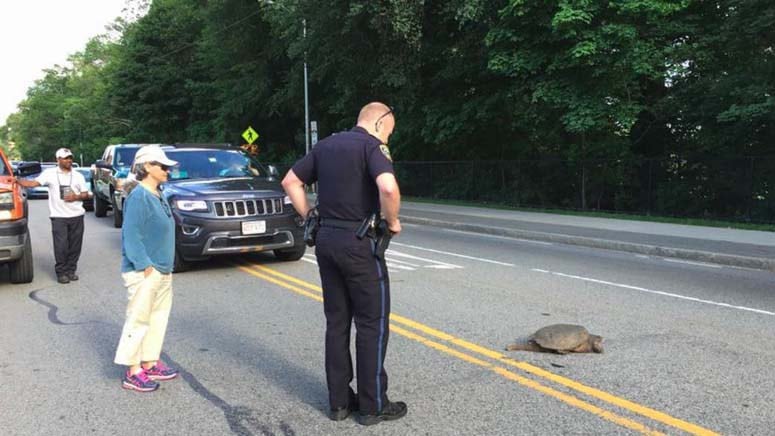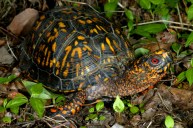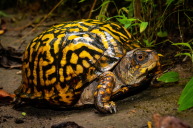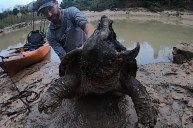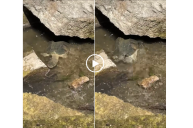It's that time of year when we see turtles crossing roads again. Snapping turtle babies are hatching from their eggs and are on the move.
The Wisconsin DNR just released their weekly digest bulletin, in which they remind drivers to be alert for baby snapping turtles crossing roads. It's snapping turtle hatching time and the little critters will be heading toward whatever water they can reach. In many cases, that means that they'll be compelled to cross roads where their lives are in peril.
The bulletin advises: Baby snapping turtles are hatching so watch for them as try to cross roadways. It's snapping turtle hatching season so drivers are urged to use caution and watch out for the little guys trying to cross pavement.
This is a good time to remind drivers throughout the United States to be alert when on the backroads and byways, whether we're talking baby turtles or full-grown turtles and tortoises. Grown turtles can and will, as part of their normal behavior, cross roads at anytime during the non-winter months. This past summer, I helped a grown snapping turtle get off a highway it was attempting to cross. I've also witnessed box turtles crossing roads during the autumn months.
Snapping turtles can mate at anytime
Snapping turtles are most peripatetic during their mating season, which usually runs from late spring through early summer. But, snappers can and will mate during any warm-weather month. That means that, depending on when she mated, a female turtle can lay her eggs well into autumn.
If she does lay her eggs in a nesting site later in the year, the clutch will simply over-winter. The baby turtles will subsequently hatch when the temperatures warm again in later spring or summer. Depending on the weather, incubation generally occurs around 60-125 days after the female lays the eggs.
Last year we had a snapping turtle lay her eggs on our property June 12. The eggs didn't begin hatching until mid-September, with the final egg hatching at day 103 after being laid.
Drive safely and alertly
It pays to be alert, as you always should be, when driving. Millions of big and small animals get hit by vehicles every year, causing injury or loss of life to both humans and critters. Of course slow-moving turtles pose no real threat to humans in vehicles, but if you're able to avoid hitting them when they cross roads, that would certainly be the right thing to do.
And, if you can safely assist a turtle that's attempting to cross a road, that's even better! It may be impossible to see small baby snapping turtles crossing a road or highway before it's too late. But on many backroads where you're driving slower, you may see the little guys skittering over the blacktop or gravel in time to stop and even help them get across safely.
Many turtle populations—both land and aquatic turtles—are dangerously low. Also, these animals are relatively slow-growing before they reach breeding age maturity. It pays to avoid hitting them whenever possible.
Andrew Badje, a Wisconsin DNR conservation biologist who coordinates the Wisconsin Turtle Conservation Program, says that the loss of even one adult female turtle can have a significant impact on future population numbers. This is especially relevant in isolated populations or in species such as the wood turtle or box turtle, which can take 12-20 years to reach reproductive age.
In Wisconsin, roadway mortality is considered a major factor in declining turtle populations.
What you can do
If you're fortunate enough to see a turtle crossing the road and you're able to safely stop, there are a few things to keep in mind as you help it across the road.
One, put your hazard lights on as you stop. This isn't only a safety measure for yourself, but it also alerts others drivers to slow their speed. Make sure you're well off the road and onto the shoulder. Check for oncoming traffic before proceeding. I know this is a common-sense procedure, but you can become so focused on the turtle that your awareness is temporarily down. It's better to have a squashed turtle than potential injury to yourself.
Two, decide if the turtle can continue onward by itself. Unassisted road crossings are favorable to human intervention. If the turtle gets nervous, it may retreat into its shell and stop moving. In that case, quickly inspect the turtle before picking it up. An injured turtle is a whole other story, which we'll discuss shortly.
Three, avoid excessive handling. While wanting to inspect turtles closely is understandable, excessive handling can disrupt normal behavior. Handle turtles gently, but firmly. If it becomes necessary to pick them up, all turtles except snappers and softshells should be grasped gently and firmly along the shell edge near the midpoint of the body. Be advised that many turtles empty their bladder when lifted off the ground, so be careful not to suddenly drop them.
If the turtle is a leatherback or a snapping turtle, use extreme caution. Each of these reptiles has a very long neck and a terrific bite. Don a pair of gloves if you have them. Pick the snapper or softshell turtle up by the top shell, by placing your hands above each back leg. Be mindful of the claws on their feet. They're sharp and can cause deep scratches on your hands and arms. Do not pick the turtle up by its tail. This can seriously harm the turtle.
If it's a really big turtle, you may have trouble lifting it by the back half of its shell. In this case, if you're able to coax or push the turtle into a box you can then carry the box to the side of the road and gently tip the critter out.
Otherwise, another method of holding really big snapping turtles is to firmly grasp the top of the shell with one hand just behind the head and the other hand firmly grasping the back of the shell. Let me warn you, though, this method is not for the faint of heart or inexperienced. A snapper cannot easily turn its head directly behind it to bite you. But the trick is getting your hand in position without being bitten. Always carry the turtle well away from your body. That neck is long and they're mighty quick.
If the turtle does bite and refuses to release, you can take a small twig and stick it into its nostril (if you have the presence of mind to do so). This usually irritates the turtle enough so that it will open its mouth and release its bite.
Four, maintain the turtle's direction of travel. Always move turtles in the same direction they were traveling in when encountered. Always move a turtle across a roadway in as direct a line as possible.
Five, wash your hands. Turtles can be carriers of E. coli or other bacteria. You should always wash and/or disinfect your hands after handling any turtle. Wearing gloves helps, but be sure to wash after handling a turtle, regardless.
Six, document your find. Many state wildlife agencies have turtle crossing and mortality report projects where you can submit information on any turtles you see crossing roads or killed by vehicles. This information greatly helps agencies document areas where turtles frequent. Wildlife agencies can direct resources and initiate roadside restoration projects to these areas to potentially cut turtle mortality rates and make it safer for both turtles and drivers.
If you have a camera, take a photograph of the turtle, either alive or dead, and submit it with your report.
Injured turtles
If upon inspecting the turtle, you discover it's been injured or has a cracked shell but is still alive, you could potentially still save its life if the injury isn't too severe.
Using all appropriate turtle handling safety precautions, place the turtle in a box lined with paper towels or newspapers. Do not place the turtle in water, as it could drown if a lung is punctured. Take the injured turtle to a wildlife rehabilitator, wildlife center or even a veterinarian. They should accept the turtle free of charge. They may be able to repair the damage and return the animal to the wild. Just be sure to let them know exactly where you found it so that it can be released into the same area.
Finally, pat yourself on the back for doing a good deed. You've made a valuable contribution to conservation and to helping wildlife that many people otherwise ignore.
Like what you see here? Experience more articles and photographs about the great outdoors at the Facebook page, Stumpjack Outdoors.
NEXT: LES JOHNSON'S SECRET WEAPON FOR CATCHING A SNAPPING TURTLE
WATCH
https://rumble.com/embed/u7gve.v3tq0x/
